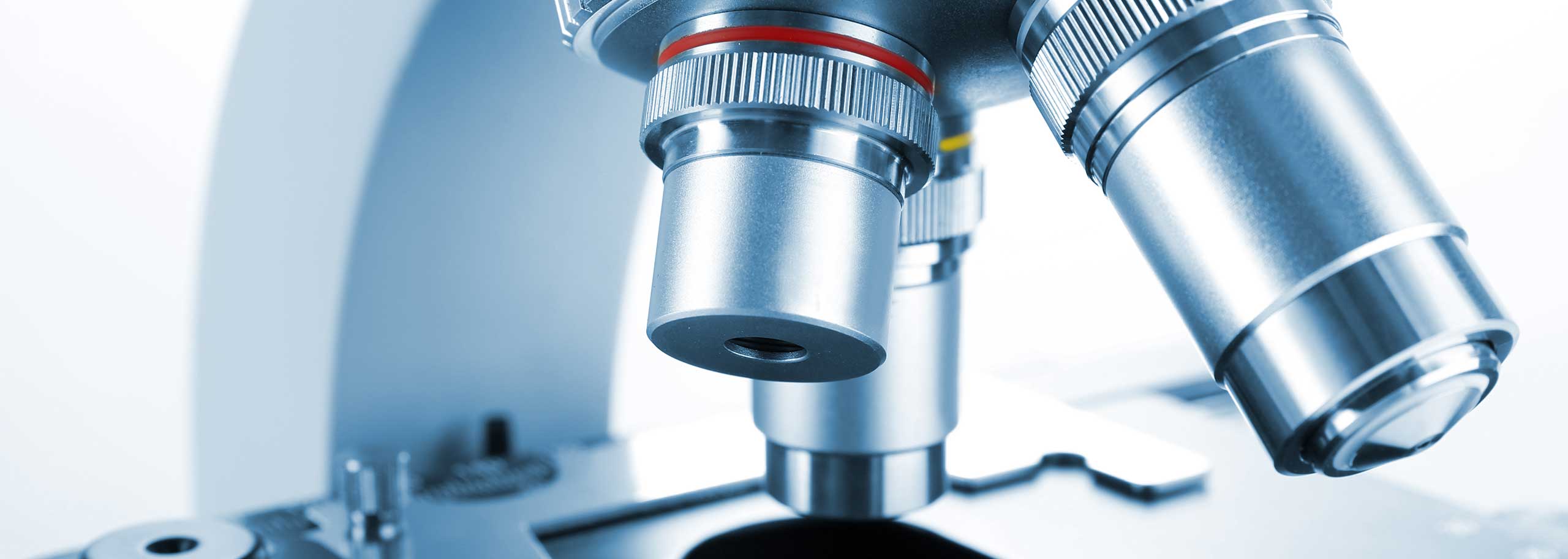
Microscopy is a widely used technique for viewing and imaging objects that cannot be resolved by the un-aided eye. There are many types of microscopes each employing a different strategy for resolving details which otherwise would remain hidden.
The most common microscope is the light microscope that can be found in nearly every secondary school or collegiate biological laboratory. Light microscopes utilize transmitted or reflected light to resolve the specimen’s features of interest and to generate contrast.
Within the category of light microscopy there are many techniques which take advantage of the various physico-optical properties of the sample to generate or enhance contrast. Some of the commonly employed properties are: absorption of light, reflectance, specimen birefringence, diffraction, and scatter.
These techniques are all based upon optical characteristics that are inherent to the specimen and have provided spatial and structural information to researchers for many decades; however, the advent of fluorescence microscopy has opened the door for answering questions that previously were unanswerable with these other techniques.
Fluorescence Microscopy
Compounds which absorb incoming light at a particular wavelength and re-emit light at a (typically) longer wavelength are termed photo-luminescent compounds. Depending on the length of time the emission of light persists, the absorbing molecule is termed either phosphorescent, where the emission can last seconds (or longer) after the incoming light source is removed, or fluorescent, where the emission ceases virtually immediately upon removal of the light source.
The power of fluorescence microscopy comes not only from its ability to generate a high level of contrast through the emission of detectable photons, but in the specificity of the technique. Fluorescing compounds can be coupled to highly specific probes, such as antibodies or short peptide sequences, to target a particular cellular structure, protein, or nucleic acid sequence of interest. Advances in fluorochrome technology have led to the development of compounds which can be used to track intracellular ion and pH changes, membrane polarization states. With the discovery, isolation, and cloning of fluorescent proteins, there is now the ability to monitor cellular processes in live cells without introducing experimental artifacts due to the presence of a foreign probe.
Because of the need for a strong light source to initiate fluorescence (usually a Mercury or Xenon arc lamp, LED, or laser), there is a requirement on the system optics to efficiently deliver this light to the sample while simultaneously eliminating it from the detection pathway. The fluorescing compounds are emitting photons at levels approaching 10-5 or 10-6 that of the excitation light source!
To block the excitation light from reaching the observer or the detector, filter sets of high quality are needed. These typically consist of an excitation filter selecting the range of excitation wavelengths, a dichroic mirror, and an emission filter blocking the excitation light. Most fluorescence microscopes are operated in the epi-illumination mode (illumination and detection from one side of the sample) to further decrease the amount of excitation light entering the detector.
The excitation filter has a bandpass design that transmits the desired wavelengths and reflects or absorbs the unwanted wavelengths. The filtered excitation light reflects off a dichroic mirror placed at 45°and excites the fluorophore. The mirror has the unique ability to reflect more than 90 percent of the light within the reflection band while passing more than 90 percent of the light in the transmission region. This directs excitation light and fluorescence emission appropriately within the optical setup. Following excitation, the fluorophore emits radiation at some longer wavelength, which passes through the dichroic mirror and emission filter into a detector.
The emission filter blocks all excitation light and transmits the desired fluorescence to produce a quality image with high signal-to-noise ratio.
The use of fluorescence detection in the biological and physical sciences has become one of the most important means for imaging, analyzing, and quantifying the structures, and functions of the materials and organisms that make up the world around us.
Since 1969, Omega has been at the forefront of filter development for fluorescence detection, from imaging applications in microscopy to signal capture in bioluminescent assays, we have designed and manufactured an extensive selection of fluorophore and application specific filters and filter sets for use in single and multi-label systems.
We employ a range of coating technologies to achieve the broadest product offer for fluorescence detection in the marketplace. Our products are optimized for providing high signal level and low background, generating excellent contrast values in imaging and non-imaging applications.
We are committed to advancing fluorescence detection through collaboration with scientists and industry worldwide.
Filter sets, components, and holders are available for all major microscope manufacturers and models, including Leica, Nikon, Olympus, and Zeiss.
